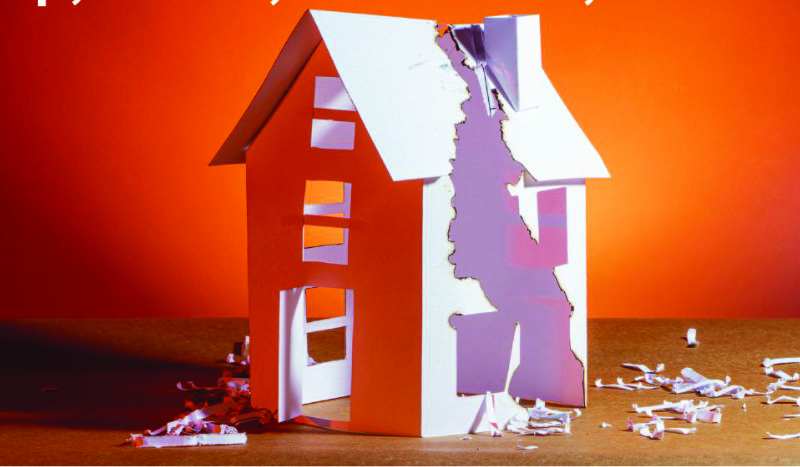“Drop, Cover, and Hold On” – How We Can Prep for the Next Earthquake
With the next major earthquake overdue, California is rolling out initiatives to help residents protect themselves. As the state marks the 35th anniversary of the destructive Loma Prieta Earthquake on October 17, Cal OES is implementing new safety measures, including the nation’s first earthquake early warning system, a statewide preparedness drill, multilingual education efforts, and an earthquake detection app.
In a media briefing on October 10, hosted by Ethnic Media Services, a panel of experts discuss how we can be prepared for earthquakes and what the future holds for us.
Speakers
![]()
- Sonya Harris, Senior Advisor, Listos California
- Amy Palmer, Deputy Director of Crisis Communications and Public Affairs, California Office of Emergency Services (Cal OES)
- Jose Lara, Seismic Hazards Branch Chief, Cal OES
The Loma Prieta Earthquake, a 6.9 magnitude quake that struck the Greater San Francisco Bay Area in 1989, left 63 dead, injured 3,757, and caused damage estimated at $5.6 to $6 billion at the time—equivalent to nearly $14 billion today. According to U.S. Geological Survey data, there’s a 72% chance of a similar earthquake hitting the Bay Area within the next 30 years and a 60% chance for Los Angeles.
“However, earthquakes remain unpredictable. It really is hard, despite all our scientific advances, to reputably predict earthquakes and the billions in damage they can cause,” said Amy Palmer.
“You may have lived through or seen some of the horrifying images of freeways and homes collapsing 35 years ago … We never want to take for granted that Californians know what to do when the shaking starts,” she added. “As we’re facing more — and varied — disasters in California, the bright spot is that it’s never been easier to get life-saving information through events like the Great ShakeOut.”
The Great ShakeOut Drill
This year’s Great ShakeOut, an annual international earthquake preparedness drill, took place across California at 10:17 a.m. on October 17.
“That’s nearly 10 million souls practicing to save their lives, and we’re expecting to surpass our largest-ever count with a few more million this next week,” said José Lara. Cal OES is also hosting on-site preparedness tours in several California cities, with stops at UC San Diego, Homeboy Industries in Los Angeles, and CSU Sacramento.
“We’re focusing on schools and youth areas because we find that in high-risk, vulnerable communities who need these preparedness messages most, whenever we’re able to reach the children, parents often get prepared as well,” said Lara.
Each tour stop will feature a 7.0 magnitude earthquake simulator to give people a realistic feel for a strong quake. “Whenever people who have never experienced a very strong shake steep out of the simulator, they ask: ‘What’s the best thing I could do to prepare today?’”
‘Drop, Cover, and Hold’
In case of a major quake, Cal OES advises people to follow the “drop, cover, and hold on” technique to protect themselves from falling debris. “In footage of an earthquake, there’s often a moment where people freeze and don’t know the right thing to do, and that’s exactly what we’re trying to combat,” said Lara.
In the 6.7 magnitude Northridge earthquake of 1994, which caused widespread damage in Los Angeles, 55% of injuries were due to falling furniture and objects—not structural damage. Lara emphasized that the outdated advice to stand in doorways or immediately leave a building during an earthquake has been replaced by “Life Safety Codes” designed to help people survive with minimal injuries.
Harnessing Technology for Earthquake Preparedness
“Unlike other weather-driven scenarios, earthquakes aren’t predictable, but technology is giving us unprecedented opportunities to be ready,” said Sonya Harris. Launched in 2019, California’s Earthquake Early Warning System was the first of its kind in the nation and now has enhanced capabilities to send alerts up to 30 seconds before a quake hits.
Millions of Californians receive alerts via the free MyShake app, which provides notifications and preparedness tips in six languages. To address privacy and battery concerns, users can opt to share only their zip codes rather than specific locations, and the app does not retain location data.
Additional preparedness resources, available through Listos California, are offered in 14 languages. Harris encouraged residents to enable emergency alerts on their phones “We also encourage everyone to enable emergency and local awareness alerts in their phone settings … our future is … one where earthquake early warning systems will be where fire alerts and automatic sprinklers now are in buildings,” Eventually, we’ll see factories pausing assembly lines, dams halting turbines, and traffic rerouted on bridges seconds before shaking begins.
Planning for Resilient Communities
“There’s often a myth that it takes more time or money than we thought to be prepared … but all these resources are free and take moments to connect to,” added Harris. “We’re honoring those we’ve lost to earthquakes, and how far we’ve come to have these seconds that will save lives.”
All images provided by EMS.


